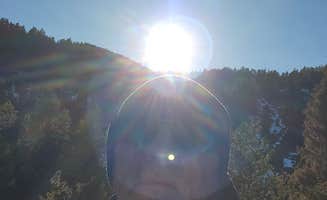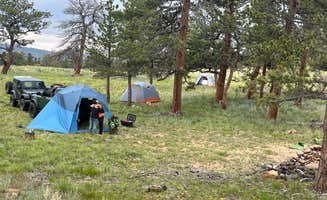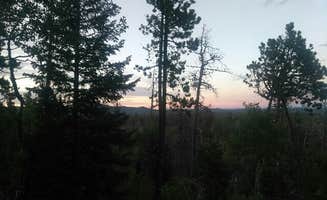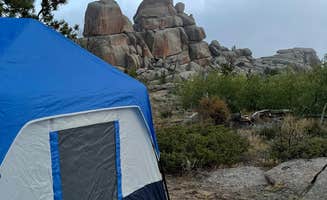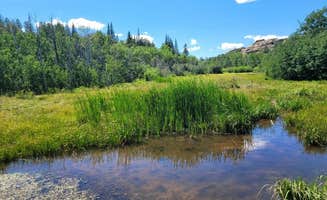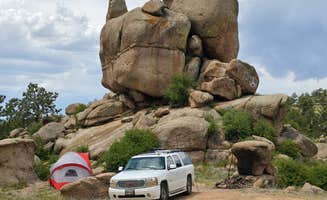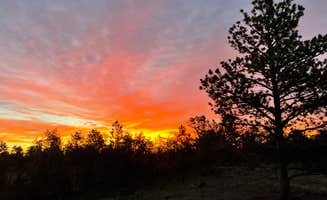The Livermore area dispersed camping spots in Arapaho and Roosevelt National Forests sit at elevations ranging from 6,500 to 8,000 feet, creating variable weather conditions even in summer months. Rustic camping near Livermore, Colorado typically requires self-sufficiency as most locations have minimal facilities. Nighttime temperatures can drop below 40°F even in July and August, particularly at higher elevations.
What to do
Hiking nearby trails: At Comanche Peak View Campground, campers have access to meadows and rock formations for exploration. "The sites were very far apart and we hardly heard or saw anyone during our stay. We stayed in a lovely, large, treed area with rock formations on one side and beautiful meadow views on the other," notes Linda P.
Water activities: Smaller lakes provide opportunities for paddling and swimming during warmer months. "Lost lake is now a good lake to help rehabilitate the Greenback cutthroat trout which is awesome and got to see a young bull moose," reports Amanda H. "The lake itself is small, but had enough space for many groups of people to enjoy. Folks were swimming, paddle boarding, and we enjoyed a Colorado version of a 'Beach Day.'"
Stargazing: Limited light pollution creates excellent night sky viewing. "This is a beautiful place to disconnect from city lights and relax under the stars," reports Henry H. about the camping areas. The higher elevation and distance from urban centers provides exceptional clarity for astronomy enthusiasts.
What campers like
Space between sites: The Arapaho and Roosevelt National Forest Dispersed Camping areas feature well-separated camping spots. "Quiet, clean, remote, primitive," notes Anthony L. This sentiment is echoed by Gary E. who writes, "Camp sites have a good amount of room, spaced to allow privacy, and easy to get in and out of. Peaceful and quiet, surrounded by mountain views."
Wildlife viewing: The area supports diverse wildlife populations that frequently visit camping areas. "Got to see a young bull moose," reports one camper. Another visitor notes, "Saw lots of deer on the drive in and drive out." Morning and evening hours typically provide the best wildlife viewing opportunities.
Accessibility without crowds: Pingree Road Dispersed Camping offers more solitude on weekdays. "It was so chill and awesome! I've been camping here for years," shares Amber B. Another camper notes, "Very quiet Monday to Thursday and heaving busy Friday to Sunday." Mid-week visits from September through early June typically see dramatically reduced usage.
What you should know
Road conditions vary: Most access roads require caution and sometimes high-clearance vehicles. "The Pingree Road is also super well maintained so I was able to comfortably get to the campsite with a FWD low clearance sedan," reports Nidhi S. from Pingree Road Dispersed Camping. Another camper advises, "Great road, rather washboarded, but go slow and you'll be fine."
Cell service limitations: Connectivity ranges from spotty to nonexistent across most primitive camping areas. "Very limited phone service with Verizon," notes one camper. Another reports, "Can verify: NO Verizon OR TMobile service." Download maps and important information before arriving.
Early arrival recommended: Popular sites fill quickly, especially on weekends. "Drove up early in the week to get a great spot by lost lake and was very successful," reports one visitor. For weekend camping, Thursday arrival substantially increases site selection options.
Tips for camping with families
Scout for broken glass: Hell Canyon Dispersed and other areas sometimes have debris issues. "Definitely check your campsite before you decide on it. Ours had so much broken glass that we had to pick up the whole time," advises Haley H. A quick survey of potential sites before settling in helps identify and mitigate hazards.
Weather preparedness: Temperature fluctuations require layered clothing and adequate sleeping gear. "The weather was so nice we slept in hammocks all week," shares Alicia O., but conditions can change rapidly. Even summer nights often require warm sleeping bags rated for 30°F or lower.
Water planning: No potable water exists at most sites, requiring transport of all drinking water. The town of Red Feather Lakes offers water access as noted by one camper: "Red feather is a very chill little town they offer free spring water (but be kind and donate a couple bucks)." Plan for 1-2 gallons per person per day.
Tips from RVers
Site selection critical: Forest Service Road 700 Designated Dispersed Camping requires careful navigation for larger vehicles. "Some of the spots require 4 wheel drive, but not all!" advises Margaret P. Another camper notes, "There's a long winding dirt road with several designated dispersed camp sites, beware the road is rutted, though we saw numerous larger trailers that made it with no issue."
Level spot limitations: Many primitive sites require adjustment for comfortable RV positioning. "Some sites in great conditions, others had glass everywhere and garbage left behind," reports one camper. Another advises, "The first main area, and the top of the first hill is the best. Two areas of sites, and the one on the left as you go up has access to the rocks on the hill."
Limited turnaround space: Larger rigs should scout ahead before committing to narrow roads. "I stayed closer to the dead end of the road and there was a larger group of kids having a ball," notes Matt S., highlighting the potential difficulty in navigating tight spaces. Some roads require backing up considerable distances if turnarounds are not available.



